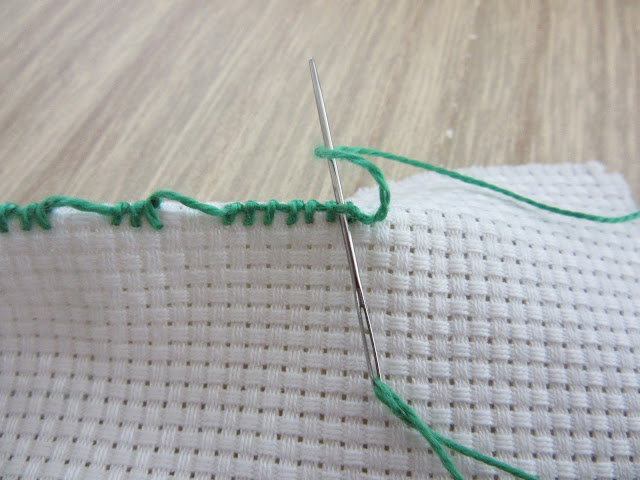Student: Yes, Miss.
Teacher: Hm, what's this then?
Student: Hm, I don't know. It's supposed to be Puncetto Valsesiano Stitch.
Teacher: Hm. Remind me, what was the set homework?
Student: Pay attention to the tension, the twist and leave enough room in each knot to insert the needle on the return journey.
Stitch something high and lacy,
and in the style of free form,
and on plain cloth.
Teacher: Well, have you paid attention to the tension and the twist?
Student: Well, Miss, I have tried to. I certainly rolled the needle and sometimes let the needle and thread dangle to untwist itself, just as I was taught in the lesson.
Teacher: Did you leave enough room in each knot to insert the needle?
Student: Well, Miss. I tried to, and I hope you don't mind me saying this, but I think your instruction was wrong.
Teacher: My instruction was WRONG???!!!
Students: Yes, I am sure you meant 'leave enough room BETWEEN the knots'
Teacher: My instruction was WRONG???!!!
Students: Yes, I am sure you meant 'leave enough room BETWEEN the knots'
Teacher: Oh! So that is how you explain the unevenness of these stitches?
Student: It WAS difficult to see where to insert the needle. It might also be due to poor lighting and my poor eyesight.
Teacher: Hm, so in your opinion this stitch needs a good source of light and a magnifying glass.
Student: ... or a microscope.
Teacher: What's that? Speak up!
Students: Well, it WAS difficult to see.
Teacher: OK. Now did you stitch something high and lacy?
Student: I stitched some areas high, like this white 'object'. I did not stitch any lace, but I made some holes, and look on the right, this is almost a face.
Student: I stitched some areas high, like this white 'object'. I did not stitch any lace, but I made some holes, and look on the right, this is almost a face.

Teacher: Hm. Well, I can see that you have stitched on plain fabric and in the style of free form.
Student: This stitch reminds me of stump work and I think it could be used for a knitted stumpwork sweater, a muffler, even a funky hairstyle or a disastrous perm....
Teacher: Hm, I'd say you need much more practice before you have mastered needle lace making. However, these 'objects' would make an interesting piece of modern free form embroidery or indeed a stump work portrait, and as the stitch was to be used as a 3D embroidery stitch, I'll accept it.
Student: So I don't have to do my homework again?
Teacher: No, you don't need to, but should you find the time, I'd be happy to see you use this stitch again in a creative way.


















































